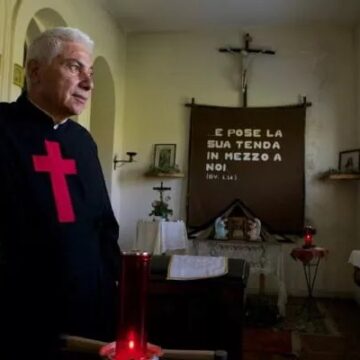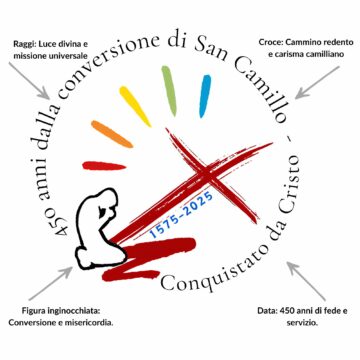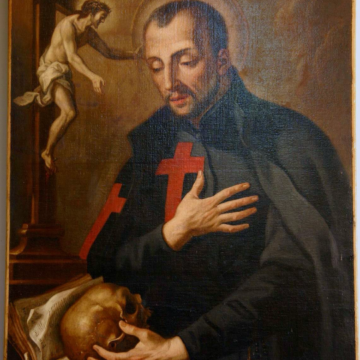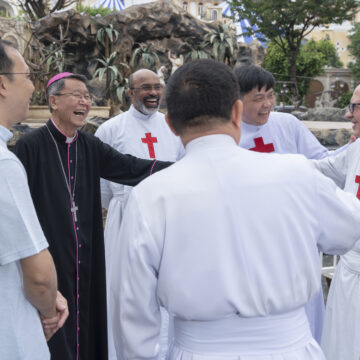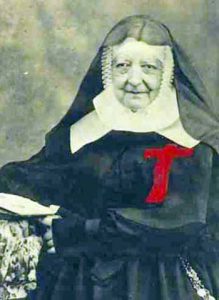 V.Lessi, Genio di carità. Maria Domenica Brun Barbantini (San Paolo, Cinisello Balsamo (MI), 2008), 220pp.
V.Lessi, Genio di carità. Maria Domenica Brun Barbantini (San Paolo, Cinisello Balsamo (MI), 2008), 220pp.
It is certainly no accident that the new Congregation arose ‘with prayers to St. Camillus de Lellis’. The charism that Maria Domenica discovered and rediscovered in her life was care for the sick because of love for the suffering Christ. There is thus an almost ‘natural’ harmony between her work and the Company of the Ministers of the Sick which had been founded almost two and half centuries previously by the former military man from Abruzzi….The work of Maari Barbantini did not arise as an imitation of its Camillian counterpart – hers was a personal and original charism. The events and the meetings of her life led her and her Congregation to recognise in St. Camillus and his followers a shared passion for Christ and the suffering.
Of fundamental importance for Maria Barbantini was her meeting with the Camillian, Father Antonio Scalabrini. The opportunity to meet him was offered by her brother-in-law, Monsignor Angelico Barbantini, who was the dean of the Church of St. Michael in Lucca. In 1828 Scalabrini was invited to preach the sermon of Lent in that church and Monsignor Barbantini had the happy idea of introducing his sister-in-law to that religious, who, indeed, was a personality of primary importance in his own Order, and to such an extent that he would later become its Superior General. The meeting took place on 1 April 1828, specifically during the period when Maria Barbantini, after completing the work of the Visitation, was reflecting on the future of her own vocation. Between the two there was an immediate recognition of the affinities of their charisms – what animated them was the same love for Christ and because of this love serving the sick and the suffering.
The esteem that Maria Domenica felt for this religious was fulsome and she chose him as her teacher. She wrote in her autobiography: ‘I had the consolation of often spending time with him in conferences of the spirit that were very useful to me’, and she added: ‘As long as he was alive he was always a loving father, and there followed an exchange of letters between us that was very useful to me in bearing the cross that was being prepared for me by men with the just permission of God’. Father Scalabrini, for his part, in the letters that he sent to Maria Barbantini did not hesitate to call the work of Lucca ‘an undertaking that belongs to me’ or ‘the new garden of my patriarch’. He encouraged this woman on the road that she had taken and comforted her with a cultural judgement on the epoch which was dominated by new secular and philanthropic ideologies…
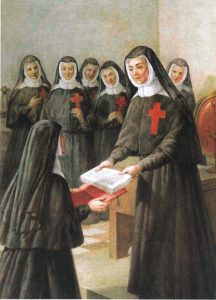 The relationship with Scalabrini convinced Maria Domenica that she should accept his proposal to associate the Sisters of the Oblate Nurses to the Order of St. Camillus. A propitious opportunity for this occurred when this religious in 1840 was elected Superior General of the Ministers of the Sick. The next year, 1841, the Institute of Mari Barbantini obtained diocesan approval. Just five months later, Scalabrini issued the decree which associated the Oblate Nurses to the Camillians. This was not a juridical act (which was in the power of the Holy See alone) but, rather, a statement of the spiritual communion of the two communities, both of which were dedicated to caring for sick people.
The relationship with Scalabrini convinced Maria Domenica that she should accept his proposal to associate the Sisters of the Oblate Nurses to the Order of St. Camillus. A propitious opportunity for this occurred when this religious in 1840 was elected Superior General of the Ministers of the Sick. The next year, 1841, the Institute of Mari Barbantini obtained diocesan approval. Just five months later, Scalabrini issued the decree which associated the Oblate Nurses to the Camillians. This was not a juridical act (which was in the power of the Holy See alone) but, rather, a statement of the spiritual communion of the two communities, both of which were dedicated to caring for sick people.
However, the goal of Maria Domenica was to achieve papal approval for her Institute and for juridical aggregation with the Camillians, to the point of wearing the habit with the characteristic red cross on the front. The pathway for this papal approval turned out to be long, difficult and torturous…
However, on 23 March 1852 there arrived from Rome the Decretum laudis granted by Pope Pius IX. This was the juridical form that the Holy See had decided to adopt to give a ‘right of citizenship’ within the Church to the multiple forms of religious life that arose during the first decades of the nineteenth century. This Decretum laudis had a fundamental importance in the life of the Congregation founded by Maria Barbantini: not only because it was the first pontifical recognition of her Institute but also because for the first time Maria Domenica and her friends were called the Sisters Ministers of the Sick, a name that still continues today. Although the juridical aggregation to the Camillian Order and wearing the habit with the red cross were still far off, in the Decretum laudis, at least at the level of the name, the affinity with the family of St. Camillus was upheld and at the same time the spiritual communion of the two Institutes was emphasised. In her writings, when addressing her spiritual daughters, the founder legitimately called St. Camillus the ‘Great Patriarch’ or ‘Patron Saint and Protector’. To the joy of Maria Domenica and her sisters, the moment soon arrived when they could wear the habit with its red cross on the front.



